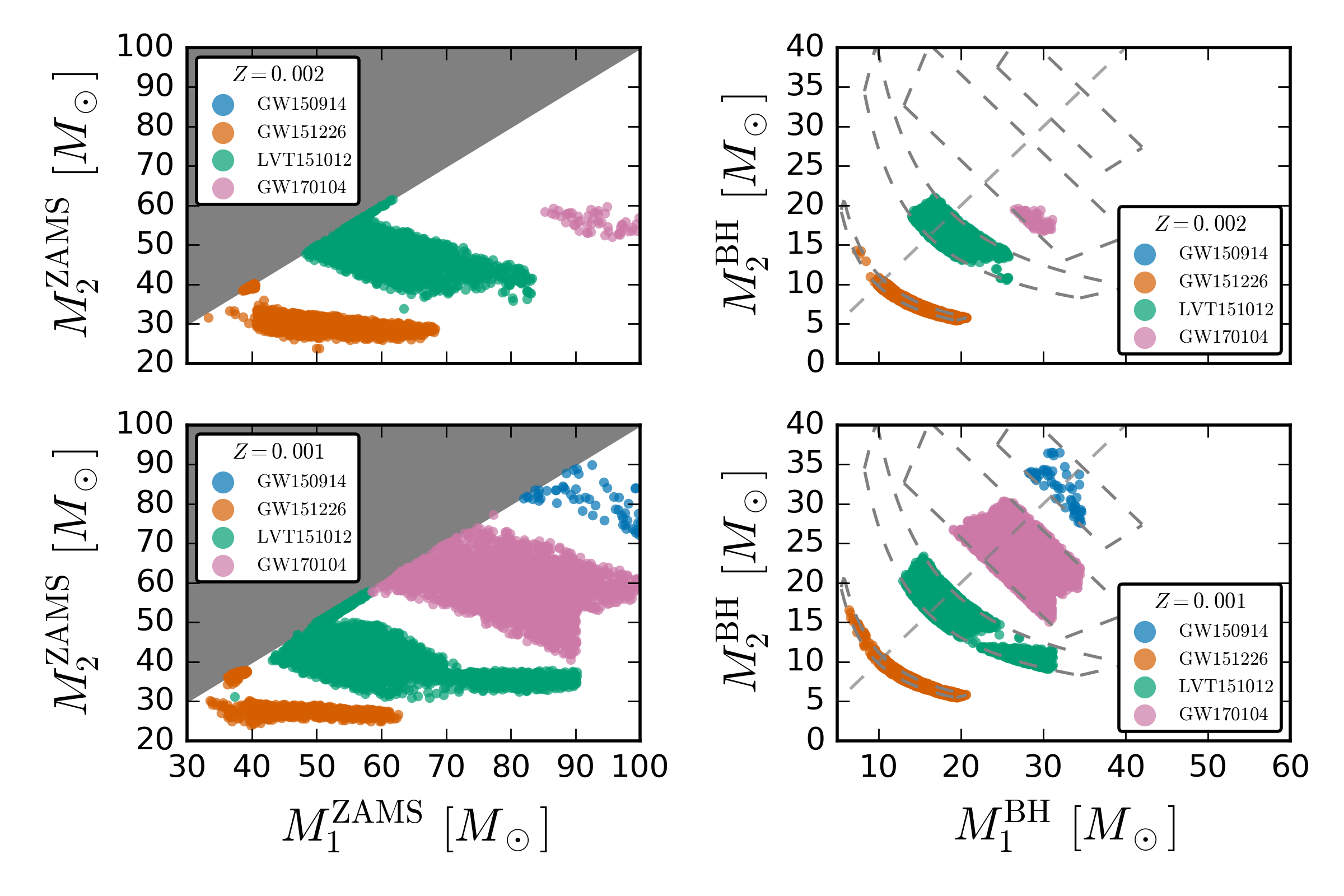My primary resarch focus now is on interpreting gravitational-wave observations to learn more about massive binary evolution. Gravitational-wave observations allow us to probe the short, brilliant, turbulent, but somewhat secretive lives of massive stars. Like a paleontologist who uses the skeletons of dinosaurs to discover what living dinosaurs looked like, we can begin to probe the evolutionary history of massive stars by observing their compact remnants, merging pairs of black holes. My group is developing a dedicated code for Compact Object Mergers: Population Astrophysics Statistics in order to model compact binary evolution and compare results to observations. I recently wrote an accessible summary and a colloquium-style review with Alison Farmer.
Other key recent research achievements include:
- Massive binary evolution
My research students and collaborators who comprise team COMPAS demonstrated that the first LIGO discoveries are consistent with forming through classical binary evolution via a common envelope phase. See our list of publications for recent highlights.
With collaborator Selma de Mink, we developed the chemically homogeneous evolutionary channel for the formation of binary black holes. Our mock data catalogs are publicly available.
- Dynamics
With Yuri Levin, we predicted that 5 to 10 percent of tidal disruptions of stars by massive black holes in galactic centers will be double disruption events. Meanwhile, binaries slowly diffusing into the galactic center are more likely to merge, possibly explaining the observed absence of a high-velocity tail of hypervelocity stars.
With Jeff Andrews, we argued that a subset of Galactic double neutron stars are inconsistent with isolated binary evolution and may have formed dynamically.
- Electromagnetic Transients
I had the priviledge of being involved in the interpreation of exciting observations of the kilonova , environment and afterglow associted with the first directly detected binary neutron star merger and constraints of afterglow models with late-time observations.
I am also trying to understand common-envelope events, including signatures of mergers within the envelope, as well as tidal disruptions of stars by massive black holes.
- Astrostatistics
My group has developed and improved methods for inference (e.g., parallel tempering in Markov Chain Monte Carlo, kD interpolation for stochastic jump proposals, improved deterministic sampling), investigated measurement accuracy on gravitational waves from intermediate mass ratio inspirals and intermediate mass black hole binaries.
We have also worked on population statistics, including counting amid confusion, clustering and classification, and combining selection effects and measurement uncertainty in hierarchical modelling Recent applications include the hierarchical modeling of observed black hole spin distributions and improved measurements of the initial mass function of stars.
- Gravitational-wave observations
I am proud to have played a role in the LIGO gravitational-wave discovery of the first binary black hole merger.

